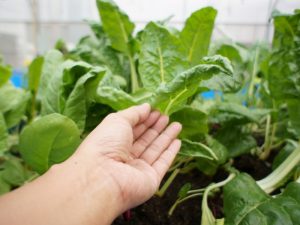Imagine stepping outside to your very own backyard oasis. Lush green rows overflow with plump tomatoes, crisp lettuce, and vibrant peppers—a feast for the eyes and the stomach! But before you get your hands dirty, planning an efficient vegetable garden landscape is crucial. Here in Sydney, with its unique climate and seasons, a well-designed veggie patch makes all the difference.
What are the critical factors in designing a vegetable garden landscape in Sydney?
Designing a vegetable garden in Sydney comes with unique challenges and opportunities. Here’s what to keep in mind:
- Climate considerations: Sydney’s Mediterranean climate is well-suited for permaculture gardening, as it allows for year-round production without relying heavily on artificial inputs. Choose plants well-suited to these conditions, focusing on drought-resistant varieties for summer and frost-tolerant plants for winter.
- Sun exposure: Most vegetables need at least six hours of direct sunlight daily. Plan your garden layout based on sun exposure, placing taller plants where they won’t shade shorter ones.
- Soil quality: Sydney’s soil can vary widely. Conduct a soil test to determine its type and nutrient levels. Amend the soil as needed with compost or organic matter to improve fertility.
- Water access and irrigation: Efficient watering is crucial, especially during hot summer. Consider installing drip irrigation or soaker hoses to ensure consistent moisture without wasting water.
- Seasonal planting: Planting in the right season is crucial to success. In Sydney, autumn and spring are ideal for most vegetables, while summer requires careful planning due to heat stress.
How can you maximise space in a vegetable garden layout?
Space can be a limiting factor, especially in urban Sydney. Here are some ways to make the most of your available area:
- Think vertical: Utilise walls and fences by installing vertical planters or hanging baskets. Herbs, leafy greens, and even smaller tomato varieties thrive in these space-saving spots.
- Raised beds: They offer excellent drainage and make it easier to manage soil quality. Opt for narrow beds (around 1 metre wide) so you can comfortably reach the centre from either side.
- Interplanting magic: Get creative by interplanting shorter-maturing vegetables with taller ones. For example, plant lettuce between your tomato plants to effectively use the space.
What are the best practices for soil preparation and planting?
Healthy soil is the foundation of a productive vegetable garden. Here’s how to prepare your soil and plant effectively:
- Know your soil: Sydney’s soil can vary greatly. Clayey soils benefit from added drainage materials like compost or sand. In contrast, sandy soils need a boost with organic matter to retain moisture.
- Compost is king: Amending your soil with organic matter like compost is a game-changer. It improves drainage, fertility, and moisture retention – all essential ingredients for a thriving veggie patch.
- Planting power: Follow the recommended spacing requirements for each vegetable variety. Overcrowding plants can lead to stunted growth, poor yields, and increased susceptibility to pests and diseases.
How can mulching and irrigation improve your vegetable garden landscape?
Mulching and irrigation are vital components of a healthy vegetable garden. They help conserve water, suppress weeds, and maintain soil temperature.
- Mulch magic: Mulching your garden beds is a multi-tasking champion. It helps suppress weeds, retain moisture in the soil, regulate soil temperature, and even deter some pests. Opt for organic mulches like bark chips or lucerne straw.
- Irrigation innovation: Water restrictions are a reality in Sydney. Consider installing a water-efficient irrigation system like a drip irrigation line. This delivers water directly to the roots of your plants, minimising waste and maximising efficiency.
What are the advantages of using native plants in your vegetable garden landscape?
Incorporating native plants into your vegetable garden landscape offers numerous benefits, particularly in Sydney’s climate.
- Water warriors: Native Australian plants naturally adapt to Sydney’s climate, requiring less water than non-native alternatives. This translates to a more water-wise garden and less work for you!
- Pollinator paradise: Many native plants attract beneficial pollinators like bees and butterflies, which are crucial for your garden’s healthy fruit and vegetable production.
- Low-maintenance marvels: Native plants require less fertiliser and are often more resistant to local pests and diseases. This translates to less time spent weeding and spraying and more time enjoying your fresh produce!
How do you manage garden pests and diseases effectively?
Pest and disease management is crucial to maintaining a healthy vegetable garden. Here are some natural ways to protect your plants:
- Crop rotation: Rotate your crops annually to disrupt pest and disease cycles.
- Companion planting: Plant pest-repelling herbs like basil, marigold, or garlic alongside vegetables.
- Manual removal: Regularly inspect your plants and remove pests by hand.
- Natural predators: Encourage beneficial insects like ladybugs and lacewings that feed on common garden pests.
- Neem oil and insecticidal soap: These organic pest control treatments are safe for plants and the environment.
When should you consider professional help for your vegetable garden landscape?
While DIY gardening can be fulfilling, there are times when professional assistance can make a significant difference:
- Prevention is key: Choose pest and disease-resistant vegetable varieties whenever possible. Regularly inspect your plants for signs of trouble and promptly remove affected leaves or plants.
- Organic options first: Whenever possible, opt for organic pest control methods like neem oil or homemade insecticidal soap. These methods are gentler on the environment and beneficial to insects.
- Seek professional help: If your pest or disease problem seems overwhelming, don’t hesitate to contact a professional landscaping company.
How can you ensure your vegetable garden landscape complies with local regulations?
Compliance with local regulations is essential when planning your vegetable garden in Sydney. Here are some tips:
- Design dilemmas: Need help to convert your backyard into a productive veggie haven? A professional landscape designer can help you create a functional and aesthetically pleasing layout that maximises your space and sunlight.
- Construction challenges: Proper installation of raised garden beds, retaining walls, or irrigation systems requires specific skills and expertise.
Transform your garden with A1 Gardening & Landscaping Sydney Sydney!
Ready to create a productive vegetable garden? A1 Gardening & Landscaping Sydney Sydney offers tailored solutions that meet your gardening needs. From designing efficient layouts to providing expert maintenance, our team understands Sydney’s unique climate and soil conditions. Contact A1 Gardening & Landscaping Sydney Sydney today to create a garden that’s not only productive but also beautifully designed to fit your lifestyle.



